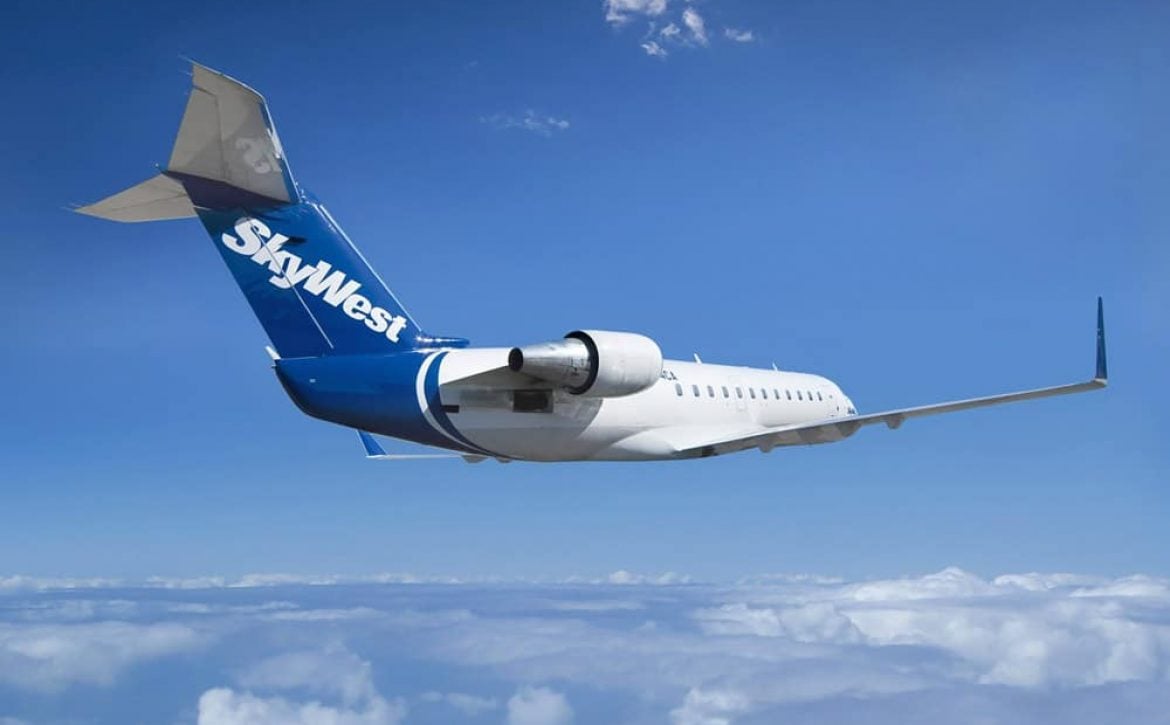Airlines are integrating new curricula and shifting the focus of airline training programs more towards enhanced safety.
Vern Weiss
Some day I should experience a different career just to see if other fields are as crazy with initialisms, acronyms and abbreviations as aviation. I’ll bet not. For the benefit of the purist, an initialism is not the same thing as an acronym. Each letter is spoken separately representing the first letter of a phrase like “FAA” (pronounced “eff-ay-ay”). Whereas an acronym is a spoken word comprised of the first letters of a phrase such as METAR (pronounced “mee-tahr) which, in everyday conversation amongst pilot buddies, would be pronounced (of course) météorologique régulière pour l’aviation. OK, so the translation isn’t as straightforward as FUBAR and SNAFU. But you must agree aviation has a bucket-load of ’em and the movers-and-shakers in aviation have been buying up all the available consonants and vowels that they can.
An Overview of Airline Training Programs
Airline training programs pretty much follow the same pattern regardless of which offers you a job. New hires start out in ground school learning about systems specific to the aircraft they’ll fly. Then comes simulator training and, depending on the simulator which is available for your particular aircraft, a short period of actual flight training might be required.1
Once completing the ground and simulator training phases there remains a final component in the sequence of airline training programs: Initial Operating Experience (IOE, sometimes called just “OE”). This stage of training is every bit as important as the others and, yes, there have been pilots who made it through ground and simulator training but could not get through IOE; but that is rare. As an airline pilot, every change you make in aircraft and every time you upgrade, you are required to complete IOE with a company check airman. IOE actually takes place during scheduled flights carrying paying passengers and you perform the duties of a regular first officer. The check airman (who doubles as the flight’s captain) will watch you carefully and provide instruction, tips and guide you through the myriad of procedural tasks you must perform. Think of it as “on the job airline training programs.” Even when you upgrade to captain it will be necessary for you to complete IOE. The check airman has the prerogative and obligation to terminate IOE at any time if it becomes apparent that you are a weak candidate and it’s probable that improvement is not anticipated. IOE typically consists of ten to twenty hours of flying spread out over the course of three to five regularly-scheduled multi-day line trips.
The Tenerife Airport Disaster and Introduction of CRM
In 1977, two Boeing 747s collided on a runway in the Canary Islands at Tenerife. The airport was cloaked in fog and neither aircraft’s pilots could see the other nor could the air traffic controller see either aircraft. There were language and phraseology misinterpretations and the long- and short- of it is that one of the 747s began its take-off roll while the second 747 was still on the runway. Nearly 600 people died in the Tenerife disaster. As a result of the Tenerife crash, NASA began studying the role cockpit communications played in accidents as well as the rigid authoritarian hierarchy and situational awareness existing on airline flight decks. By the early 1980s a new concept, “cockpit resource management”2 became accepted worldwide to minimize and, hopefully, eliminate those behaviors that contribute to accidents. CRM is now an important component of airline training programs and FAA Part 142 schools are including it in their programs designed for Part 91 corporate and Part 135 air taxi operators. At the core of CRM is sound reasoning: Speak up if you see or suspect something is wrong, verify, help each other; common sense basics like “drink your milk” and “don’t run with scissors.” Many improvements have appeared as a result of CRM even outside the aircraft. As an example, prior to CRM awareness air traffic controllers would rattle off a string of instructions. Now they limit the numbers given in clearances to pilots. Instead of “TransAir 257 turn left heading 2-6-0, descend to 2-5-0 and slow to 190 knots.” Did he say descend to Flight Level 2-6-0, turn to a 190 degree heading and slow to 250 knots?” No. So now they issue only two numerical components and, only after you read it back correctly, will they issue you the third piece of the instructions with which they want you to comply.
CRM is now integral to new-hire and re-currency training programs. It defines how the two-person flight crew interacts in the spirit of unity and cooperation. It can get real busy on the flight deck of an airliner, especially approaching the destination. Captains and First Officers commonly alternate flying each leg. The PF (Pilot-Flying) just flies. Period. The PNF (Pilot-Not Flying) does all the radio work. But approaching your destination, there are many other duties required of the PNF: Company Operations is waiting for your radio call with your ETA info, maintenance status and in return advise you of your parking gate. The PNF must also obtain the weather from the ATIS (or ACARS if equipped) and calculate landing data and target speeds for the approach. The PNF is real busy. Meanwhile the air traffic controllers seem to continually be calling with headings and altitudes as they line you up for the approach. You can’t do it all. Enter CRM. Even though the PF’s duty is only to fly the airplane, everything might be under control and you will be excused to go off the controller’s frequency to take care of all those things while the PF handles any calls from the controllers.
Or the flight attendant calls and says there’s an unruly passenger and the captain is the PF on that leg. He feels comfortable being alone during this portion of the flight and can handle the radio easily while managing the airplane. Even though he’s the ultimate authority for the flight and usually the one to handle such problems, he also knows you are brand new on the job and it will also start getting busy soon. His evaluation of the situation leads him to decide not to leave you alone handling the radio and the imminent flurry of flight instructions, so he delegates the responsibility of your going back to settle the problem. Before you remove your headset you say, “I’m off the radio” and he says, “I got the radio.” Anyone observing this exchange might think it should have been obvious to both of you who was listening and who wasn’t. But it’s verification that he’s now handling his and your tasks and you are excused.
Or the air traffic controller issues a clearance to turn to 320° but the pilot who’s flying makes no attempt to change the aircraft heading. The non-flying pilot leans over toward the flying pilot and says, “Um, Jim…did you copy he wants a turn to three-two-zero?” “Oh gosh! I was daydreaming!”
That’s CRM.
The Advanced Qualification Program
In the last 15 years a new pilot training concept has been introduced with increasing use among most major and a growing number of regional airlines. The Advanced Qualification Program (AQP) is a voluntary departure from traditional FAA Part 121 and 135 pilot training methods. Once an air carrier submits and receives FAA approval for their AQP program, pilots can be trained using innovative, non-traditional means so long as their proficiency meets or exceeds the level resulting from traditional curricula. FAA Advisory Circular 120-54 states that in an AQP program, pilots are trained to a standard of proficiency on all objectives and it is not necessary to verify proficiency by checking every such item on every check ride. Rather, the proficiency evaluation may consist of a sampling of one of several similar items.3 The benefit of the AQP program is that it can reduce training time and cost. More flexibility is permitted to introduce new technologies and equipment, operations and training techniques without conflicting with the literal interpretation of regulations and/or protracted approval protocols. Proficiency tasks can be consolidated in an AQP. As an example, outside of an AQP pilots must demonstrate non-precision approaches during each proficiency check. This means VOR, NDB and localizer approaches must each be flown. Under an approved AQP a pilot need only demonstrate one of these types of nonprecision approaches.
Advanced Qualification Programs place heavy emphasis on Crew Resource Management. In the “old days,” the mentality leaned toward pilots showing that they could be “loaded up” during an emergency and handle it all. AQP’s attention is on safety, efficiency and utilizing all of the resources (including other crew members) in dealing with emergencies as well as non-emergency situations.
What is FOQA?
Flight Operations Quality Assurance (FOQA) is an acronym pronounced “foh-kwah.” It’s not a training term but is a significant tool in the development of airline training programs. FOQA centers on Flight Data Monitoring4 whereby equipment monitors and records sensor parameters as an aircraft moves. In turn, this data is downloaded and analyzed to determine operational problems, maintenance issues and reveal areas where cost could be reduced. The overall goal of FOQA programs is to improve safety but often Flight Data Monitoring reveals problems that would not otherwise be known in the way aircraft are handled. Here’s an example: There may be an instrument departure that requires an aircraft reaching 3,000 feet by the time it is 5 miles from the airport. FOQA analysts notice that airline pilots consistently violate this requirement and routinely reach only 2,700 feet by the time they pass the 5 mile point. To fix this performance deficiency, the airline implements changing it’s training procedures to include a departing airplane leveling off at an interim altitude to allow it to accelerate to a predetermined speed, then continue its climb. The additional speed and momentum gained in a momentary level-off might be all that is needed to achieve the performance required to comply with the 3,000′ restriction in the departure procedure.
FOQA may also reveal pilots’ violations or mishandling of the aircraft. This probably explains why the program doesn’t enjoy unanimous enthusiasm although checks and balances are built into data collection to protect anonymity to a certain degree. FOQA exists for what its name implies, quality assurance.
In Conclusion
There was a time, not so very long ago, that pilot training was somewhat inconsistent and check-ride maneuvers spontaneous. Ask someone who got their ATP certificate in the 1960s what their check-ride was like. Some of those pilots’ stories about the devious things concocted by their examiners are incredible. Thankfully we have moved beyond such haphazard methods and airline training programs are now more carefully thought out, tried-and-tested and audited to make it more “real world” and safe. Isn’t that the goal of any training?
Get Started With Your Flight Training Today
You can get started today by filling out our online application. If you would like more information, you can call us at (844) 435-9338, or click here to start a live chat with us.
Sources and Footnotes:
1 – Flight Simulator Training: Cutting Costs and Improving Skills – STIMulation BY SIMulation Vern Weiss – December 8, 2015.
Older models of aircraft still flown by airlines may breed older types of simulators. Pilot proficiency check rides conducted in Level “C” and Level “D” simulators (if approved and usually are by the FAA under Part 121 Appendix H) can be used for the entire proficiency check. However older simulators that are still be around may require an inflight training session (“3-bounces” or touch-and-goes) in the actual aircraft.
2 – The term “Cockpit Resource Management” later evolved into “Crew Resource Management” because the concept was extended beyond pilots to other flight crew members and the cockpit was more often called the “flight deck” on airline transports.
3 – https://www.faa.gov/training_testing/training/aqp/more/background/
4 – Many pilots prefer the derisive term, “the snitch.”







